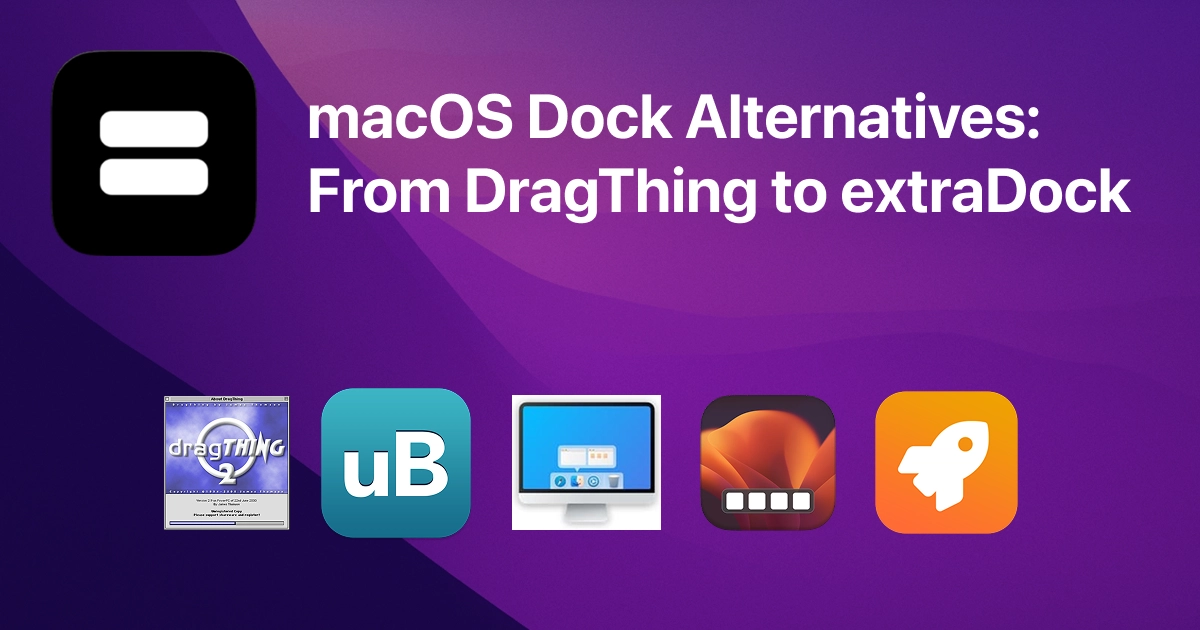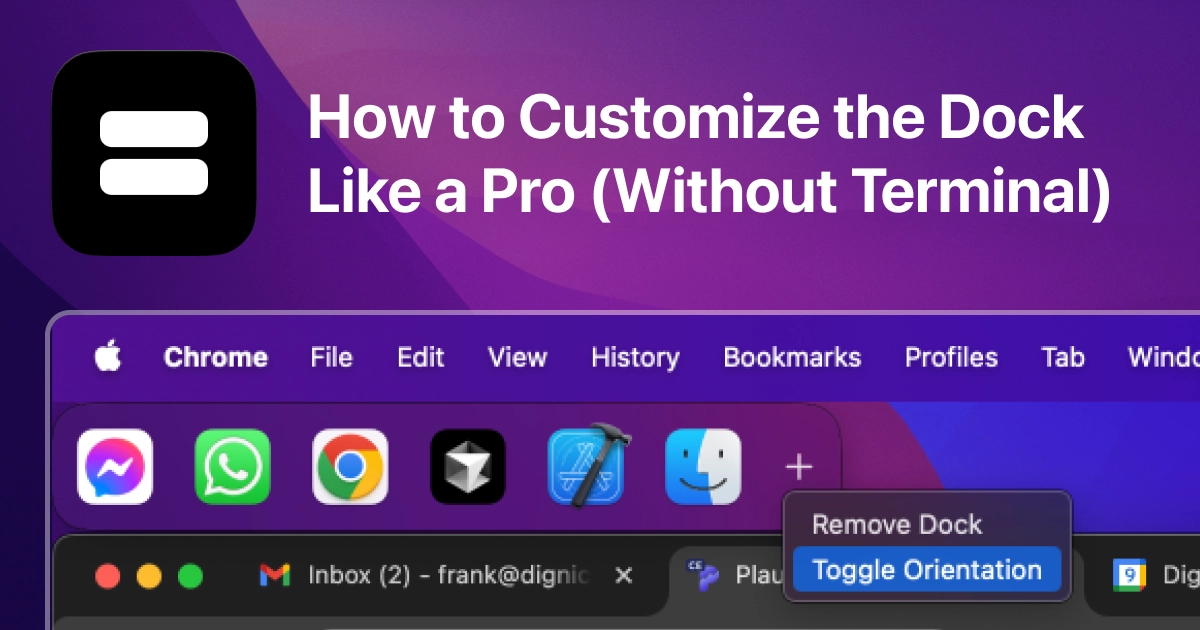macOS Dock Alternatives Compared: From DragThing to ExtraDock

The macOS Dock has long been a staple of Apple’s user interface, but for power users and multitaskers, its limitations can be frustrating. Fortunately, several alternatives have emerged over the years, each offering unique features to enhance productivity.
In this article, we’ll compare some of the most notable macOS Dock replacements, from the classic DragThing to the modern ExtraDock, helping you choose the best fit for your workflow.
🧓 DragThing (Legacy)
Status: Discontinued Features:
- Multiple docks with customizable tabs
- Drag-and-drop organization
- Extensive theming options
Pros:
- Highly customizable
- Supported multiple docks and layouts
Cons:
- No longer maintained
- Incompatible with recent macOS versions
Ideal for: Users on older macOS versions seeking a classic Dock experience.
🪟 uBar
Status: Active Features:
- Windows-style taskbar for macOS
- App window previews
- Customizable themes and positions
Pros:
- Familiar interface for Windows switchers
- Efficient window management
Cons:
- May feel out of place in macOS aesthetics
- Limited customization compared to others
Ideal for: Users transitioning from Windows who prefer a taskbar layout.
🧰 ActiveDock
Status: Active Features:
- Customizable Dock with themes
- Window previews and management
- Grouping of apps and documents
- Start menu-like application launcher
Pros:
- Highly customizable appearance
- Enhanced window management features
Cons:
- Some features require Pro version
- May have a learning curve for new users
Ideal for: Users seeking a feature-rich and customizable Dock experience.
🧱 ExtraDock
Status: Active Features:
- Create multiple floating docks
- Position docks on any screen or location
- Lightweight and non-intrusive
- No replacement of the system Dock
Pros:
- Simple and intuitive setup
- Ideal for multi-monitor setups
- Does not interfere with the native Dock
Cons:
- Focused on adding extra docks rather than replacing the system Dock
Ideal for: Users needing additional docks for enhanced multitasking without altering the native Dock.
🧩 DockFix
Status: Active Features:
- Customizable Dock with themes and widgets
- Community-shared Dock configurations
- Enhanced functionality with notification badges and file shelves
Pros:
- Extensive customization options
- Active community for sharing setups
Cons:
- May be overwhelming for users seeking simplicity
Ideal for: Users looking to deeply customize their Dock experience and share configurations with a community.
⚡ SpeedDock
Status: Active Features:
- Create customizable docks for your desktop
- Docks can float anywhere on screen or be fixed to one edge
- Assign docks to different desktop spaces or monitors
Pros:
- Flexible dock positioning
- Supports multiple monitors and spaces
Cons:
- Limited theming options compared to others
Ideal for: Users seeking a straightforward, flexible Dock replacement with multi-monitor support.
🏁 Conclusion
Each Dock alternative offers unique features tailored to different user needs:
- DragThing: Great for nostalgia and extensive customization (on older macOS versions).
- uBar: Perfect for those who prefer a Windows-like taskbar.
- ActiveDock: Offers a rich set of features for users wanting a customizable Dock.
- ExtraDock: Best for users seeking additional docks to complement the native Dock, especially in multi-monitor setups.
- DockFix: Ideal for users wanting deep customization and community-shared configurations.
- SpeedDock: Suitable for users needing flexible dock positioning across multiple monitors.
Consider your workflow and preferences to choose the Dock replacement that best suits your needs.
🔗 Related Articles
- How to Add an Extra Dock to Your Mac in 2 Minutes
- macOS Dual Monitor Dock Setup: What Apple Doesn’t Tell You
- Floating Dock on macOS: Myth or Possibility?
Written by Frank Karro, developer of ExtraDock — enhancing your macOS experience one dock at a time.


